LATEST NEWS


Truck drivers at the ports of Los Angeles and Long Beach will begin a strike at 6 a.m. today against local subsidiaries of XPO Logistics, a Connecticut-headquartered freight transportation company. The drivers are taking the action because they say that XPO misclassifies them as independent contractors rather than as employees – a practice that allows companies to claw back pay, duck labor standards and pass vehicle maintenance costs onto drivers.
Misclassification policies amount to wage theft, according to labor advocates and increasingly one-sided rulings by courts and regulatory agencies. Studies have found that between 10 and 20 percent of employers misclassify at least one employee in nearly every American industry, from construction to home care to janitorial services to transportation.
At the same time that XPO’s drivers will be walking picket lines, drivers protesting similar treatment from Pacific 9 Transportation, another freight-hauling company servicing the ports, will enter the 15th week of a strike against that business.
» Read more about: Bulletin: Port Truck Drivers Strike Over Wage Theft »
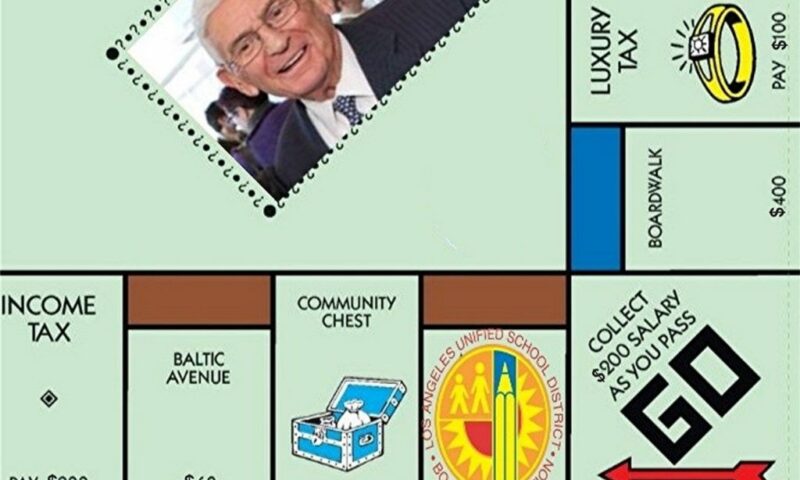
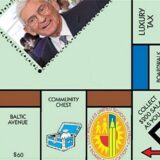
Last month, the Los Angeles Times released a terrifying confidential roadmap for privatizing L.A.’s schools that was produced by billionaire Eli Broad. Broad plans to raise and spend $490 million to create enough privately operated charter schools to house half of the city’s public school students.
The “Broad Plan” is an ambitious, all-sided assault on public schools, potentially funded by money from a who’s who of the nation’s billionaires, including the Walton heirs, Elon Musk, and Steven Spielberg.
Broad’s strategy is to compete directly with the Los Angeles Unified School District (LAUSD) for what he calls “market share,” by more than doubling the number of charters already in the city. Diane Ravitch writes that Broad wants to “decimate the remaining public schools by draining them of students and resources.” Former LAUSD board president and state Assemblywoman Jackie Goldberg calls it a plan to “privatize and destroy public education.”
Just imagine what these resources—which are in the Broad Plan budget—could do for L.A.’s existing public schools:


Earlier this month our team from Jobs to Move America (JMA) attended the American Public Transportation Association (APTA) Annual Meeting in San Francisco. We were there to learn the latest in transit trends, from sustainability planning to high-speed rail. We were also an outspoken advocate on behalf of American labor and taxpayers amongst 1,500 attendees. Unfortunately, even with the presence of the Department of Transportation (DOT) and the Federal Transit Administration (FTA), domestic labor was largely left out of the conversation, since most participants were public transit officials, manufacturing company representatives, and private sector consultants focused on stretching the dollar.
Despite this bottom-line focused crowd, we were encouraged by the plenary session’s appearance of DOT Secretary Anthony Foxx. He argued that with the right configuration, transportation can connect workers to sustainable jobs and living wages, and transportation as an industry can also generate employment opportunities for disadvantaged Americans seeking second chances.
» Read more about: Making Public Transportation Work for America's Job Seekers »


Sue Poucher, 64, is a Navy veteran from Michigan who joined the paid workforce at age 18, and left it in April 2014, due to a lack of job openings in her field, retail sales. She was one of 200 people who attended a daylong conference in Sacramento Oct. 15. The gathering, called “Tomorrow’s California: New Visions for Retirement Security,” focused on the release of a new report on aging, economics, public resources and policy solutions.
“I get Cal-Fresh, live in U.S. Housing and Urban Development subsidized senior housing and rely solely on my $943 monthly Social Security check,” Poucher told Capital & Main at the conference. “When food prices go up, what are you supposed to do, not eat?”
Nearly two-thirds of California’s private-sector workers lack employer-sponsored retirement plans.
The Sacramento resident has no savings to fall back on,
» Read more about: Conference Sees Hard Road for Retiring Californians »
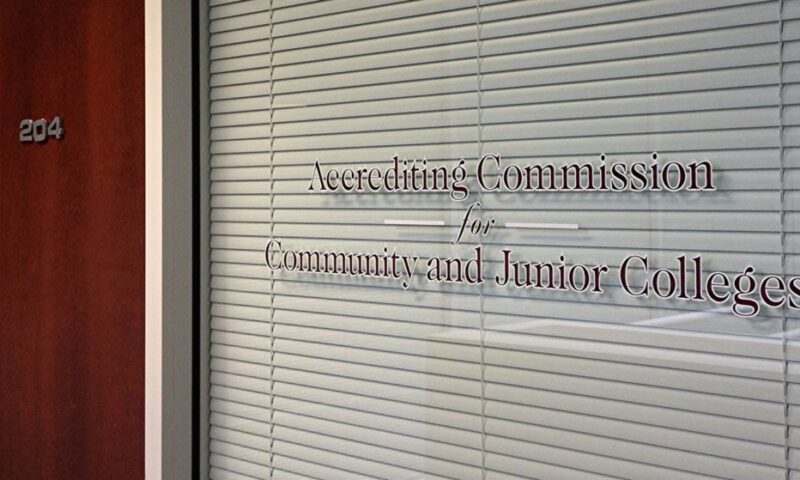

“It is too far gone, let’s start over again.” That is the growing consensus of opinion after years of rising tensions and escalating concerns about the methods and practices of the Accrediting Commission for Community and Junior Colleges (ACCJC). The organization has accredited California’s community colleges for more than 50 years, but now faces losing the authority to put its stamp of approval on the two-year colleges.
In a major policy shift, California Community Colleges Chancellor Brice Harris and a task force of administrators, faculty, trustees and accreditation liaisons have called for “the investigation of all available avenues for establishing a new model for accreditation.” In other words: Find a new commission. The recommendation is contained in the Chancellor’s Report on Accreditation, released in August.
See Capital & Main’s ACCJC Story Archive
“The time has come,” the report pointedly concluded,
» Read more about: Task Force: Replace Junior College Accreditation Commission »
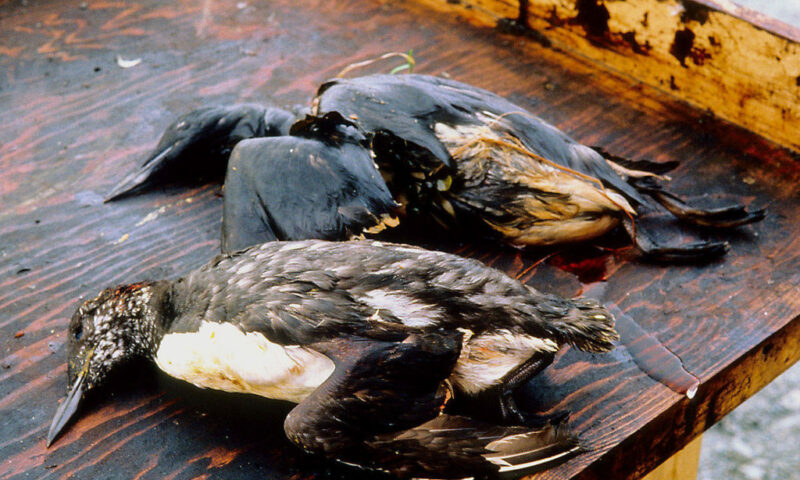

Five trillion tons.
That’s how much ice melted in Greenland and Antarctica between 2002 and 2014 – and the reason why the seas already rise above low-lying islands in the South Pacific, displacing tens of thousands of people and threatening coral reefs that nurture uncountable numbers of sea creatures. Because of the climate change crisis we’ve become used to reading this kind of metric, along with the science-class comparisons that make it easy to visualize the colossal numbers involved. (Those five trillion tons, we are told, could make an ice cube 11 miles long on each side.) What we don’t always grasp, however, is the domino effect that one environmental disaster can have on the other side of the world.
A few years back, my wife Susan and I camped at Malakoff Diggins State Park, just north of Nevada City in Northern California. The place is famous for its earth formations that are similar to those of Brice Canyon National Park,


You wouldn’t hand your laptop to a hacker, right? Well, the Senate could make a move just as foolish. They’ll soon vote on nominations to the U.S. Postal Service (USPS) Board of Governors and the nominees include a longtime advocate for postal service privatization and a lobbyist for the payday lending industry.
The Internet has changed how most of us communicate, but mail remains a central part of our communications infrastructure. A public postal service supports democracy and commerce by providing affordable mail service to everyone, rich or poor, in all areas of the country. It also nurtures marginalized communities by providing access to good jobs and career advancement.
Despite being under attack, including by the absurd requirement to “pre-fund” the next 75 years of its retiree health benefits in a 10-year span—a demand not made of any other federal agency or any well-run private company—the USPS has remained a vibrant public service.
» Read more about: Payday Loan Lobbyist Nominated to Postal Board »


California’s senior population is expected to increase by 64 percent in the next two decades, and most will be financially unprepared for retirement. This is according to a report from researchers at the University of British Columbia and the University of California, Berkeley. Their study, Aging California’s Retirement Crisis: State and Local Indicators, was commissioned by California Retirement Security for All and projects population expansions among seniors to be felt most in the Los Angeles and Central Valley regions, with economically vulnerable Latinos, African-Americans, women and renters accounting for an increasing share.
“Our study clearly shows a mounting retirement crisis in California, and with the threat of poverty in the senior years falling hardest on people of color, workers in low-wage jobs, women, and immigrants,” said the report’s editor, Dr. Nari Rhee of the Retirement Security Program at U.C. Berkeley.
The report was introduced today at a Sacramento conference called “Build Tomorrow’s California: New Visions for Retirement Security,” attended by community advocates,
» Read more about: Uncertain Times Ahead for California's Aging »


Traveling to and from Israel to take care of his cancer-stricken dad caused Ari Gottlieb to leave a full-time job in sales. As a result, the 37-year-old Los Angeles resident sought “on-demand” employment as an Uber ride-share driver in March 2013. Gottlieb told Capital & Main by phone that he provided nearly 3,000 rides to Uber customers before the company permanently “deactivated” (e.g., fired) him in August 2014.
Deactivation severs drivers’ connection to Uber’s app-based platform. Without that digital access to passengers, drivers are unable to earn income.
“The company contended that I was canceling customer requests for rides,” Gottlieb said. “It was true, but I didn’t have a choice, due to traffic, where I was and the location of the request. I hoped that the customers got a closer driver. Spending 30 minutes driving for a one or two-mile Uber customer trip didn’t make sense.”
Gottlieb labored as an independent contractor,
» Read more about: A Clash of Conveniences: Uber’s "Deactivation" of Drivers »
It’s hard to imagine now, but there was a time when San Francisco was considered a working-class town. It had always been home to a generous share of bohemians, dilettantes and tycoons, of course – but it had also been the city of unchallenged union power, the general strike and rough-hewn but familial neighborhoods spilling from the Fillmore District to Potrero Hill. It’s where even Jack Kerouac worked as a brakeman for Southern Pacific.
“Anyone who disappears,” says a character in The Picture of Dorian Gray, “is said to be seen at San Francisco. It must be a delightful city and possess all the attractions of the next world.” Generations of Americans in search of reinventing themselves have agreed – along with those simply searching to invent. This latter group of “tech bros, hipsters and yoga yuppies” is the focus of Alexandra Pelosi’s 40-minute documentary, currently viewable on HBO TV and its streaming platforms.


A few weeks ago I went to a conference in Miami on infrastructure private-public partnerships, or “P3s.” We’ve written plenty about the pitfalls of P3s that don’t have strong public protections. I learned at the conference that Miami has big plans. We’re paying close attention and helping local advocates ensure that these plans to rebuild Miami serve taxpayers, workers and families, not just private investors.
Miami-Dade Mayor Carlos Gimenez spoke at the conference and made it clear that his vision includes privatizing essential public goods. “It used to be Miami-Dade County wanted to operate everything,” Gimenez said. “I don’t want to operate anything.” He talked about tapping the private sector to finance, build and operate a new transit line and courthouse. A P3 for a new water treatment plant is already underway.
Miami is growing fast and has real infrastructure needs.
» Read more about: Miami: Public Interests or Privatized Development? »


Wisconsin Governor Scott Walker may have dropped out of the presidential race, but his influence is still haunting public workers, as evidenced by a bill that now sits on the desk of California Governor Jerry Brown. That legislation, SB 331 or the Civic Reporting Openness in Negotiations Efficiency Act (CRONEY), is the latest flashpoint in an ongoing war that Walker helped trigger when he moved to roll back the rights of public employee unions in early 2011.
While Walker was met with a huge backlash that drew protesters from across the country, in Orange County, local officials saw a green light to advance their own agenda against organized labor. Just a week after Walker signed Act 10, eviscerating collective bargaining rights for government workers in Wisconsin, the city of Costa Mesa issued layoff notices to nearly half its employees, paving the way for the outsourcing of hundreds of union jobs.
» Read more about: The Ghost of Scott Walker Visits Jerry Brown »
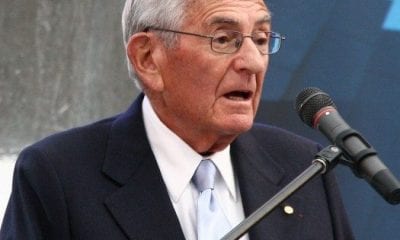

If there were still any doubt about Eli Broad’s desire to gut traditional public education, it has been erased by his much-discussed “Great Public Schools Now” initiative, a draft of which LA Times reporter Howard Blume obtained last month.
Broad’s 44-page proposal outlines plans to replace half of LAUSD’s existing public schools with charter schools. “Such an effort will gather resources, help high-quality charters access facilities, develop a reliable pipeline of leadership and teaching talent, and replicate their success,” states the document. “If executed with fidelity, this plan will ensure that no Los Angeles student remains trapped in a low-performing school.”
According to the proposal, Broad wants to create 260 new “high-quality charter schools, generate 130,000 high-quality charter seats and reach 50 percent charter market share.”
(Actually, LAUSD has 151,000 kids in charters now: 281,000 out of 633,000 LAUSD students is 43 percent. This isn’t the only imprecision in the proposal.)
The estimated cost of this LAUSD transformation would be nearly half-a-billion dollars.
» Read more about: Eli Broad and the End of Public Education as We Know It »
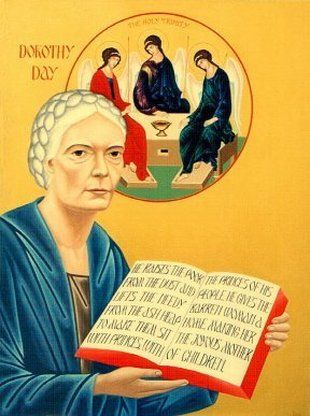

In his speech to Congress, Pope Francis praised Dorothy Day — along with Abraham Lincoln, Martin Luther King Jr., and Thomas Merton — as one of four “representatives of the American people” whom he admired.
Pope Francis was probably the first pope to mention Day’s name in public. It is unlikely that anyone else who addressed Congress in the past had uttered her name.
No doubt most members of Congress — and most Americans watching the speech on television or listening on the radio — had never heard of her. Many of them would have had to Google her on their iPhones and tablets. Some of them — like House Speaker John Boehner, the arch-conservative who invited Pope Francis to speak to Congress — might not have been pleased with what they discovered.
Day (1897-1980) founded the Catholic Worker movement on the principles of militant pacifism, radical economic redistribution,
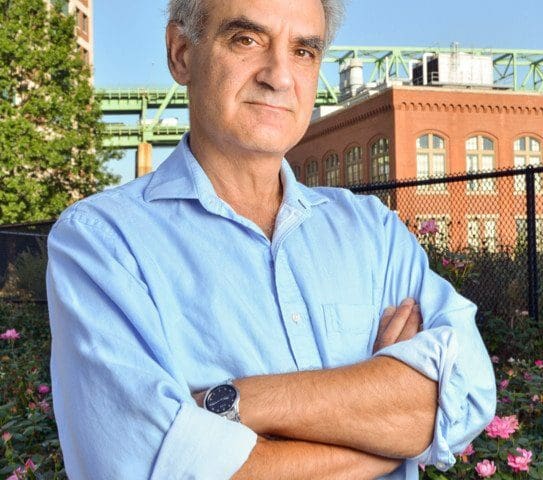

It’s that time of year when I look for my name on the list of MacArthur Fellows, and not finding it once again resolve to keep working and wait until next time. But truly, perusing such a list is as humbling as it is inspiring.
From puppeteers and choreographers to novelists, set designers, economists, chemists, sociologists, journalists, educators, environmentalists and community leaders, the MacArthurs each year offer a who’s who of the best and the brightest, making us feel optimistic about the capabilities of the human mind and spirit.
“These 24 delightfully diverse MacArthur Fellows,” as MacArthur President Julia Stasch states, “are shedding light and making progress on critical issues, pushing the boundaries of their fields, and improving our world in imaginative, unexpected ways.”
And what’s especially unique about the MacArthur Genius grant, as stated on the foundation’s website, is that “the fellowship is not a reward for past accomplishment,
» Read more about: Geniuses Among Us – the MacArthur Foundation Class of 2015 »


Last week, the Center for Media and Democracy (CMD) released striking data about the rapid turnover of charter schools. CMD’s state-by-state list of closed charters shows that, since 2000, these schools have failed at a much higher rate than traditional public schools. And over this time, millions of federal dollars went to groups planning to start charter schools that never even opened.
Instead of giving children the ‘disruption’ of a school closure, we should do everything we can to give every child access to a great school.
Earlier this month, teachers and school staff in Seattle did just that. After a five-day strike, they won a better education for students at traditional public schools across the city. Elementary school students now have guaranteed daily recess, which many parents had wanted, and special education teachers will teach smaller, more individualized classes.


“How do you spell your name?” asked the beltway woman staring at her laptop in the lobby of a lavish Southern California resort. Was she Googling me? I tried not to panic. Instead, playing up the jetlag, I quipped that I really did know my name by heart and gave her one of my business cards that said I was a consultant. Then I realized she was typing my name to put on my badge. Casually she handed me my lanyard, schedule and swag bag.
I was in!
Why are reporters barred from attending the Community Financial Services Association of America (CFSA) annual conference? Why all the secrecy? The organization says full disclosure and transparency are part of their best practices – but no media or streaming are allowed at its annual shindig. This is a $46 billion dollar industry based on subprime (they now call it nonprime) customers —
» Read more about: Payday Lenders: 'We're Not Bottom Feeders!' »
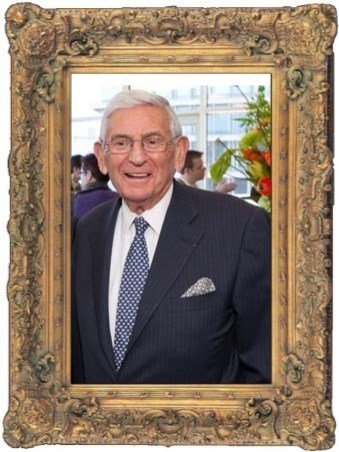

There now is a flow of fresh cultural monuments in Los Angeles that runs from the High School of the Arts over to Disney Hall. This includes, of course, the 36-year-old Museum of Contemporary Art, with which billionaire philanthropist Eli Broad was once deeply involved, and which Broad’s new art museum now competes with. All of a 30-year sudden, we have a cultural downtown center, complete with a hinterland of new bars, stores, costly restos and so on.
Little is left of the downtown of 40 years ago – or of its scruffy arts bohemia. But that is the way of these things: Yupster egg joints are replacing the old Grand Central Market stalls that sold fruit for 20 cents a pound, new buildings arise on former parking lots where dead people sometimes turned up in the cars of those who worked overnight nearby.
The Broad museum (it’s officially called “The Broad”) looks like a mammoth white-enameled Claes Oldenburg version of a Sur La Table cheese grater.


Sometimes religious people tend to be slower to adapt to changes coursing through the culture, especially with concerns about human-caused climate change. Even though polling shows Catholics, for example, to be slightly ahead of the national curve of global warming awareness, further inspection reveals that only 53 percent of white Catholics think climate change is a critical or major problem, although 73 percent of Hispanic Catholics do. These figures were measured a year ago, but there are signs that most church members aren’t even aware of the Pope’s environmental Encyclical, released this past June.
Those figures still fall short of the nation as a whole. Some 91 percent of Democrats, 78 percent of independents and even 51 percent of Republicans think the government should be doing more about climate change. One would think that’s too awesome a majority for a deadlocked Congress to ignore.


Two court orders and the most expensive wrongful death settlement in California history should be enough. But not for Corizon, a corrections health care company owned by a private equity firm.
For seven months earlier this year, Mario Martinez, a prisoner in Corizon’s care at the Dublin, California Santa Rita Jail, suffered from asthma that kept getting worse. A judge issued two court orders requiring the company to provide Mario urgently needed surgery, but they didn’t operate. While Mario suffered, Corizon even settled a lawsuit for $8.3 million with the family of a prisoner who, five years earlier at the same jail, had died in the company’s care.
In July, Mario suffered an asthma attack, collapsed in his cell and died.
Mario’s mother, Tanti Martinez, had hoped to bring her son’s story to Pope Francis, who on Sunday visited a Philadelphia jail that also contracts with Corizon.
» Read more about: Cruel and Unusual Punishment: Private Correctional Health Care »